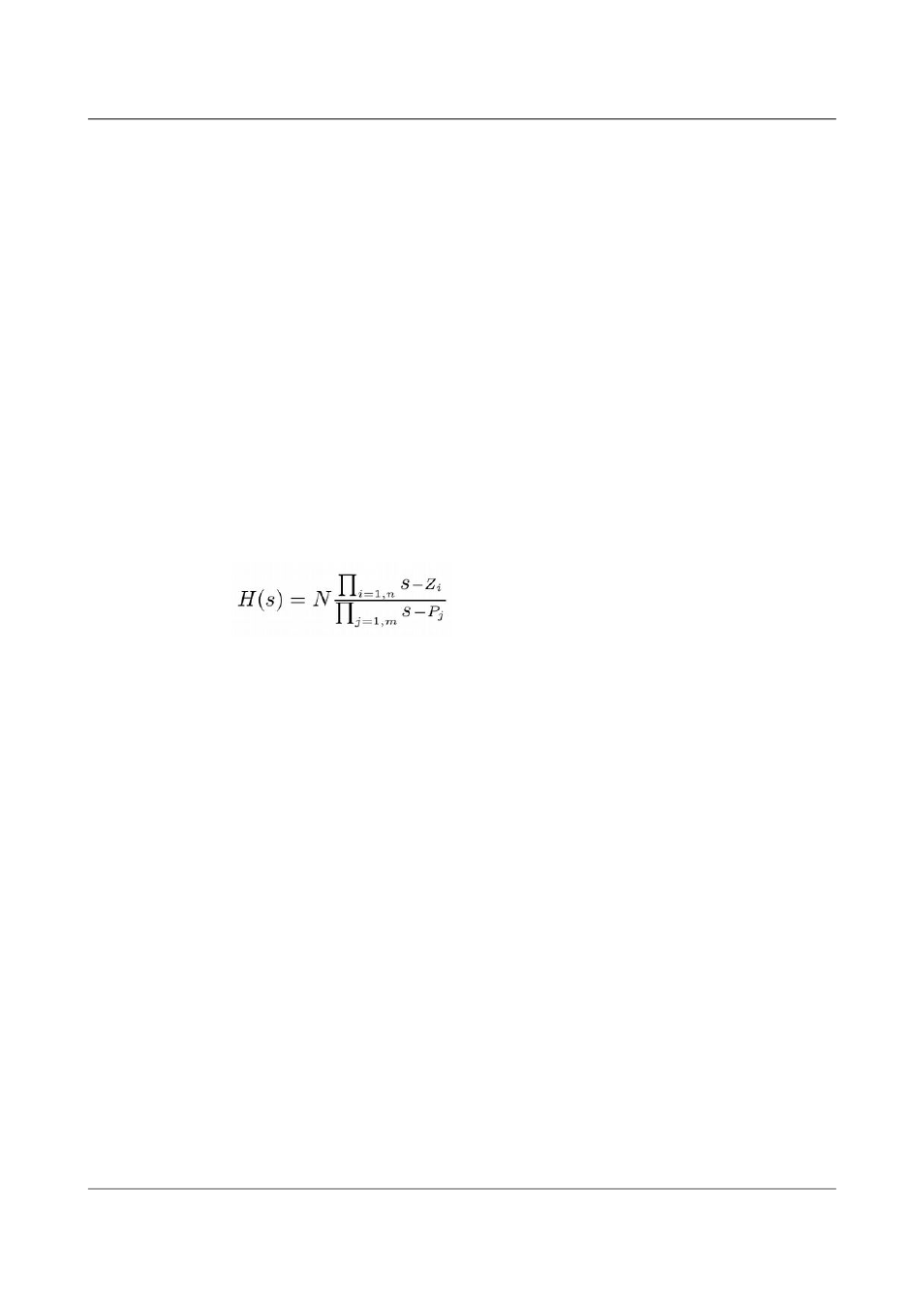Guralp Systems CMG-6TD User Manual
Page 73

Calibrating the 6TD
mechanics and electronics can be disregarded. This relationship, given in
terms of the Laplace variable s, takes the form
[V / x](s) = G A H(s)
In this equation:
•
G is the acceleration output sensitivity (gain constant) of the
instrument. This relates the actual output to the desired input over the
flat portion of the frequency response.
•
A is a constant which is evaluated so that A H(s) is dimensionless and
has a value of 1 over the flat portion of the frequency response. In
practice, it is possible to design a system transfer function with a very
wide-range flat frequency response.
The normalising constant A is calculated at a normalising frequency
value f
m
= 1 Hz, with s = j f
m
, (where j = √–1).
•
H(s) is the transfer function of the sensor, which can be expressed in
factored form:
In this equation, Z
n
are the roots of the numerator polynomial, giving
the zeros of the transfer function, and P
m
are the roots of the
denominator polynomial giving the poles of the transfer function.
In the calibration pack, G is the sensitivity given for each component on the
first page, whilst the roots Z
n
and P
m
, together with the normalising factor A,
are given in the Poles and Zeros table. Transfer functions for the vertical and
horizontal sensors may be provided separately.
73
Issue F - February 2014